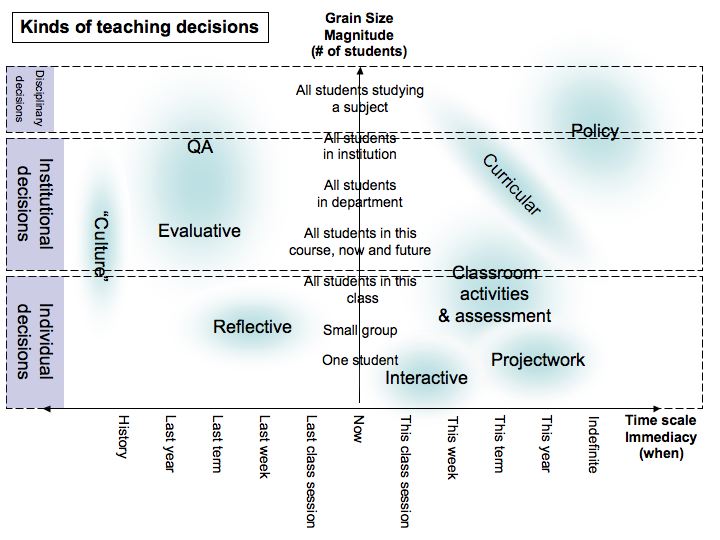I’ve been reading Jim’s paper, and Yishay and John’s recent experiences with organisational frameworks for the patterns.I think we have to remember that there is a problem that mapping to an organisational framework is intended to solve. The problem is: how does a practitioner who is new to the system find the patterns that will be useful to them? Ease of locating relevant patterns should, in my view, be the criterion by which we judge any organising framework. True to the Planet, participatory methodology, we have been getting users collaboratively to develop the framework, but the users we have been working with have been essentially the pattern contributors. In doing this, we mustn’t loose sight of the intended end users who come to the system cold and need to locate relevant patterns.
I’ve been trying to view recent Planet experience with this view in mind. In some ways I think it reduces the complexity of the problems significantly – but inevitably increases it in others. So, first the reductions in complexity:
- Concern with mapping tools and process is irrelevant unless the nature of the tool used for mapping affects the usability of the resultant framework for end users
- We can collapse the time dimension. Jim outlines a “decision cycle” which I think, might more properly be called a “development and use cycle”. The point being, that whenever a practitioner has to make a decision, they are effectively in “planning and design” mode. Jim’s scenario of use illustrates this: as the teacher implements activities that generate more information about the students, reviews the design and is faced with deciding what to do next, what has changed is the contextual information available to the teacher, not the fact that they are now consulting the patterns in order to design the next bit of the module. Ie. the use of patterns is for designing – it might be for designing activities, or designing feedback, or for designing evaluation, but the point of use is in the design stage. Collapsing the time dimension enables us to avoid a major issue – that the planning and design process is both iterative and parallel, and thus the time dimension is not a simply connected linear one.
- As John’s group recognised, decisions may be individual, institutional or discipline-wide. In very crude terms there is probably a 1:1 mapping between these levels and time. Institutional or discipline decisions (and hence consultation of the patterns) have to be done a long way in advance of implementation. Individual decisions (and consultation of patterns), can be done closer to implementation (but not too close because by then it is too late). If we accept such a 1:1 mapping, it enables us, once again, to ignore the time dimension by collapsing it into the level description.
So, where does this leave us? Imagine a teacher with a problem consulting the patterns to try to find a solution. I think they will want to locate themselves within the organisational framework through the parameters of their problem – eg. “large class with very varied abilities”, ie. they will be locating the patterns through descriptors of their context. It seems as though both the eFormative assessment workshop, and one of the CETL ALiC groups started to develop frameworks that were based on simple context descriptions.
Some suggestions for where we could go (if we had time):
- Try to establish what the key dimensions of context are. As well as collaborating with users, places to look for evidence would be the forces descriptions in our patterns, the fields used by the pedagogic planner and Mod4L projects, the taxonomies of learning activities developed by the DialogPlus project and by Helen Beetham.
- Develop the pattern tagging system to request tags for the key dimensions, enabling contextual search and retrieval of patterns
- Map the patterns (our collection and others) against the dimensions for a gap analysis.
Talking about gaps raises a further question that we haven’t addressed so far:
- Do the gaps matter? A pattern has an impact if it points to something the designer would not otherwise have thought of. If the gaps arise because they represent such common practice that no-one has thought it worth articulating, then they may not matter (although we would want to be assured that the practice was so common that even novices were aware of it). If, on the other hand, they are gaps because they are crucial parts of practice but rare among our contributors, then filling the gaps would have considerable impact. If high impact gaps have arisen because of the affordances of our methodology, then we might want to reconsider the methodology in the long term.








